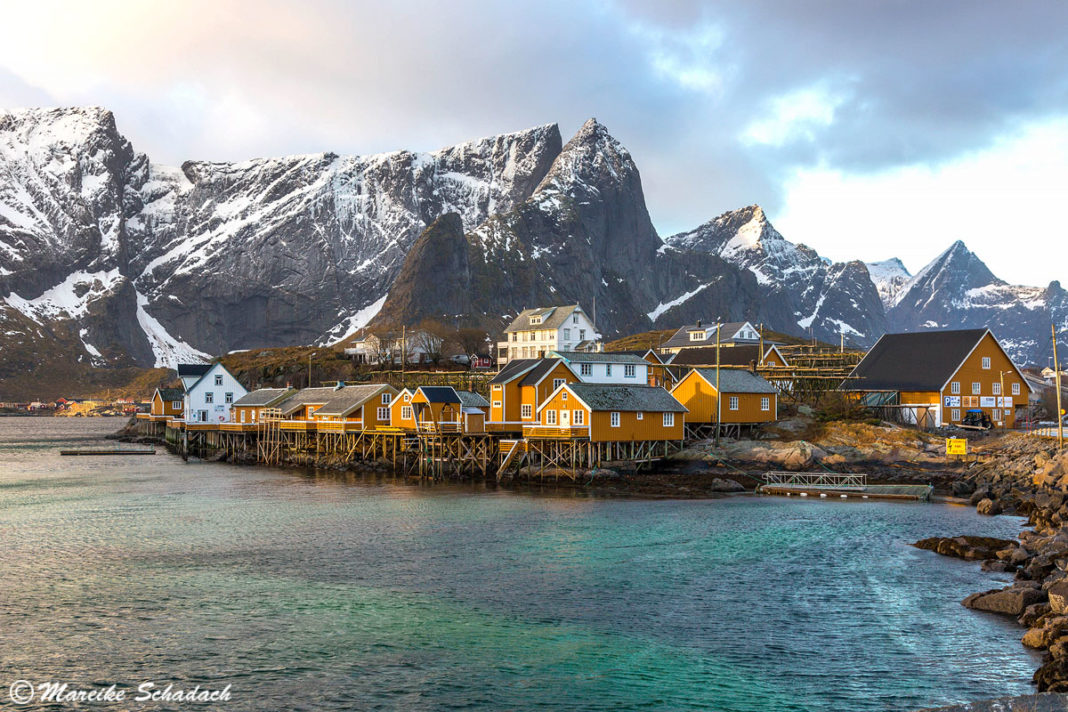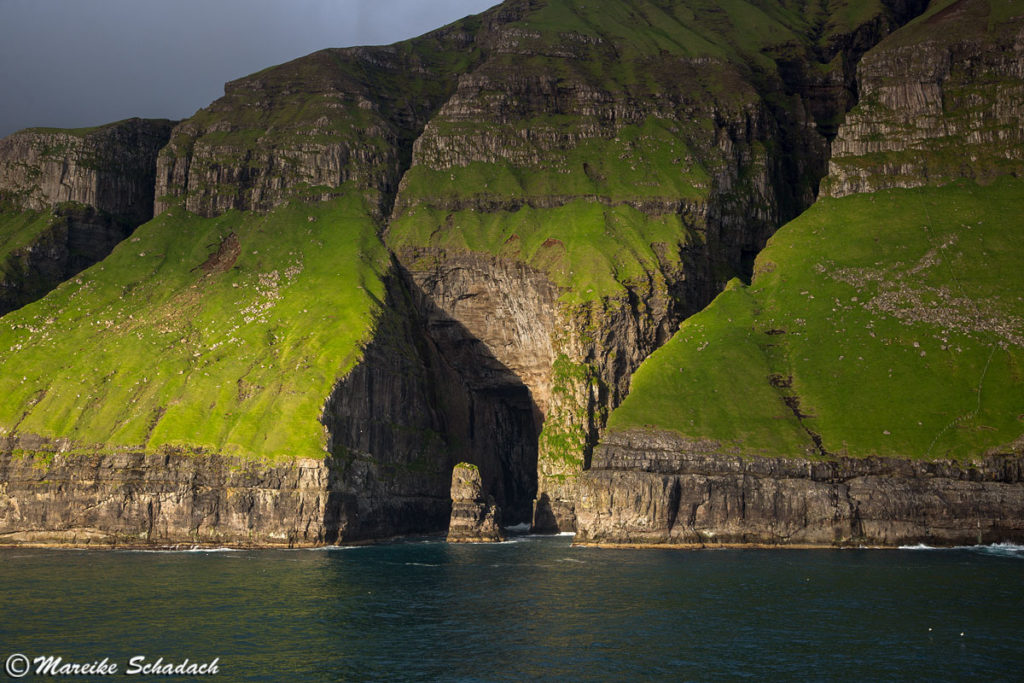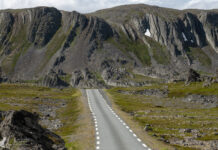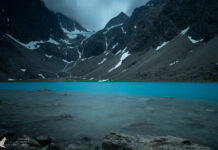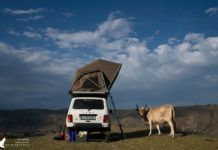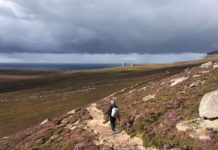Lofoten and Vesterålen, Norway. Why not visit Lofoten in winter? The rugged landscape of the islands looks simply fantastic with snow. The colourful wooden houses look even more colourful and the fish racks start to fill up. If you are lucky, you can even see whales and northern lights. The long twilight periods also give a great light for taking pictures. Here I would like to introduce some highlights for a visit to Lofoten and Vesterålen in winter. You will also find tips for great photo locations.
Unassigned, unpaid advertising. The article contains affiliate links.
What you will find in this article:
Lofoten and Vesterålen - what can you expect in Winter?
Road Trip in Winter
The Accommodation - Tradition and cosiness in Rorbu
Stockfish Culture - Fish over fish
Destinations in Winter - Highlights and Tips for Photo Locations
1. Vesterålen - Whales and Sea Eagles in Andenes
2. Fishing Station by Svolvær
3. History of the Lofot Fishing at Lofotmuseet Kabelvåg
4. Fishing Village Henningsvær
5. Nusfjord - one of the most beautiful Places on the Lofoten
6. The Church of Flakstad
7. Kvalvik - Hike to the Bay with Surfer Hut
8. Sildpollnes Chapel at Austnesfjord
9. Fishing Village Å i Lofoten - Fishery Museum
10. Rorbuer of Hamnøy and Reine
11. Northern Lights - Highlight in Winter
Book Recommendations
Lofoten and Vesterålen - what can you expect in Winter?
The snow covers the mountains like a thin layer of icing sugar. From the top of Tjeldbergtinden we can see the rugged landscape of the east coast from afar. We are all alone up here, no other hikers far and wide. What was normal during our hikes in winter, you will experience less often in summer in Lofoten: the feeling of being alone in an untouched nature. Because in the main season from June to August a wave of motorhomes overruns Lofoten. The islands are then close to their capacity limit.
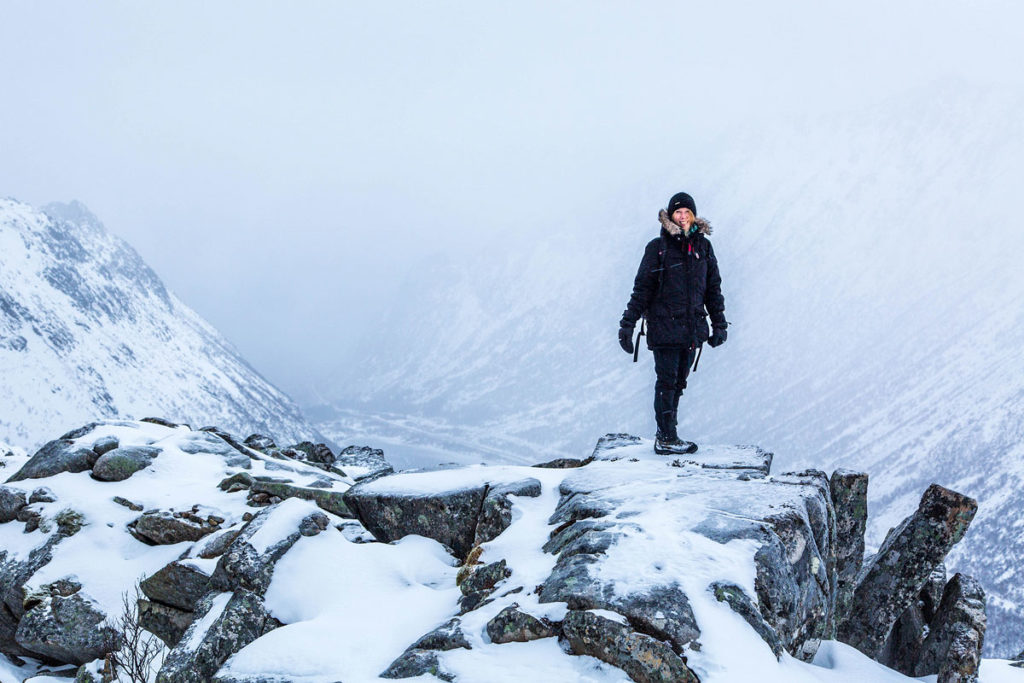
Breathtaking mountain landscapes, deeply incised fjords and white sandy beaches - that is Lofoten. Contemplative fishing villages, colourful wooden houses and fish racks characterise the landscape. The islands are a paradise for nature lovers, hikers and all outdoor enthusiasts. For photographers, the dramatic landscape also provides a perfect backdrop.

The Lofoten - in English "the lynx foot" - lie in Norway between the 67th and 68th degree of latitude. This corresponds to about 100 to 300 km north of the polar circle. The archipelago consists of about 80 individual islands. The main islands are connected by bridges or tunnels. In the north of the Lofoten, the archipelago joins the Vesterålen. Here the landscape is somewhat flatter and there are also good opportunities for whale watching.
Favoured by the Gulf Stream, Lofoten also has a very mild climate in winter. The coldest month is February with an average temperature of -2°C. In the warmest month of July, however, the temperatures are only 12-14 °C.
Since wind and waves mostly come from the west, the eastern sides of the islands are more populated. So you will find most of the villages on the east coast. The landscape becomes more mountainous from north to south and has an alpine character with up to 1,200 metres of altitude.
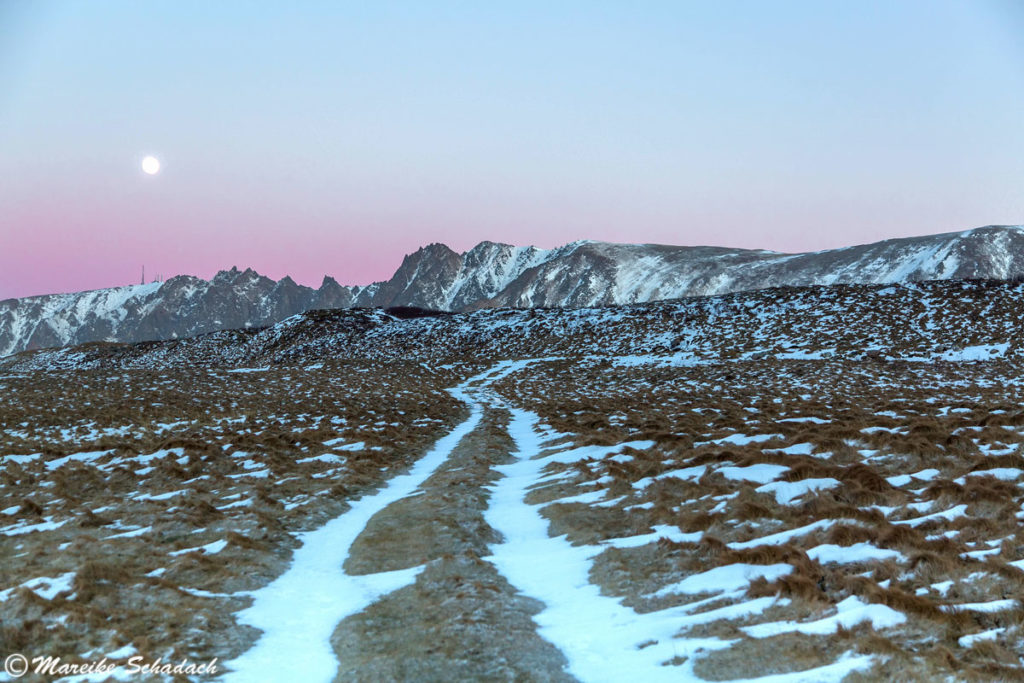
Road Trip in Winter
For our winter trip to Lofoten and Vesterålen we flew to Bodø and took a rental car there. The tires of the small VW Up had spikes, so that we always felt safe on the icy winding roads. On the way there, we first drove to Tromsø and then over the land connection "Lofast" to the islands. For the way back, we took the ferry from Moskenes up to Bodø. From the ferry, you have then again a great view to the so-called Lofoten wall, thus the mountain panorama of the islands.
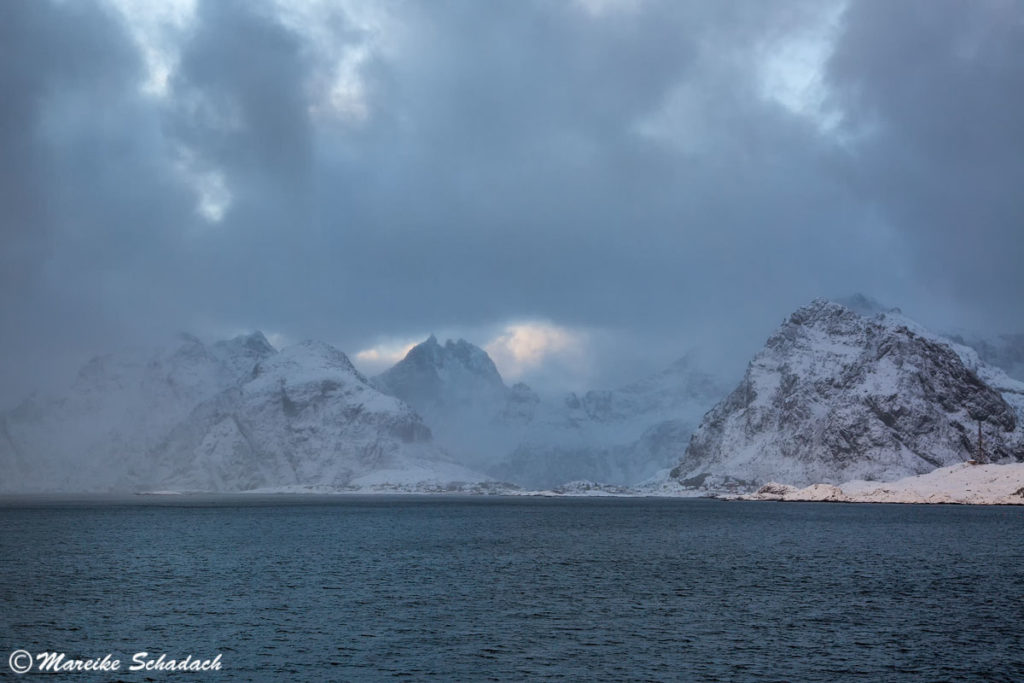
We drove the islands from the north of Vesterålen to the southernmost tip of Lofoten. This had the advantage that the landscape became more and more spectacular, as Lofoten gets more and more mountainous and rugged towards the south.
The road conditions were good, but according to the season. Better plan a little more time for the single stages, then you also have more time to drive to the right and enjoy the view over the landscape.
The Lofoten are very popular for photo trips in Norway. Therefore you can see our favourite photo locations on the map next to our route. By clicking on the symbols you can see the photos as a small foretaste.
And if you have a little more time available: How about extending your road trip in Norway a little bit more and visiting Tromsø? Here you can learn more about Tromsø - the gateway to the Arctic.
The Accommodation - Tradition and cosiness in Rorbu
Rorbuer are small huts close to the water, which once served as quarters for the fishermen during the annual cod fishery from January to April. There are rorbuer in the whole north of Norway. Mostly they are associated with the Lofoten. The word is composed of ro (rowing) and bu (living). They are made of wood and usually painted with the then cheap red tran paint as protection. Sometimes they stand halfway in the water on stilts, thus allowing direct access to the boats. Usually several Rorbuer stand at the same time together. They are always a great photo motive and from the inside very comfortable.

The traditional rorbuer consisted of an anteroom for the equipment and a main room. In this room the whole boat crew often slept, cooked and ate. Usually six men belonged to a boat crew. The Lofotmuseet near Kabelvåg shows how such a rorbu was furnished at that time.

King Øystein I had the first Rorbuer built on Lofoten during the early 12th century. Most of them were owned by the village and rented to the fishermen. Some, however, belonged to the fishermen themselves. In the middle of the 20th century, the fishing boats became larger and at the same time became the quarters for the crew. As a result, the rorbuers lost their importance and decayed, many were demolished. In the 60s, however, the conversion of well-preserved rorbuer into modern holiday apartments for tourists began. They offer an original and cosy holiday home, which is also typical for northern Norway.
The Lofoten Fishery - Stockfish and Fish Racks
A sea of fish opens before my eyes. I look closer. On the left rack hang only fish heads, several of them tied together in a bundle. On the frame on the right, on the other hand, the bodies are hanging, each tied together in pairs. It is February and slowly the huge wooden fish racks are filling up, which you can discover almost everywhere on Lofoten and are a classic highlight of the islands. Until around June, the fish remain hanging in the open air and dry during this time in Lofoten's special maritime climate to become a regional speciality.
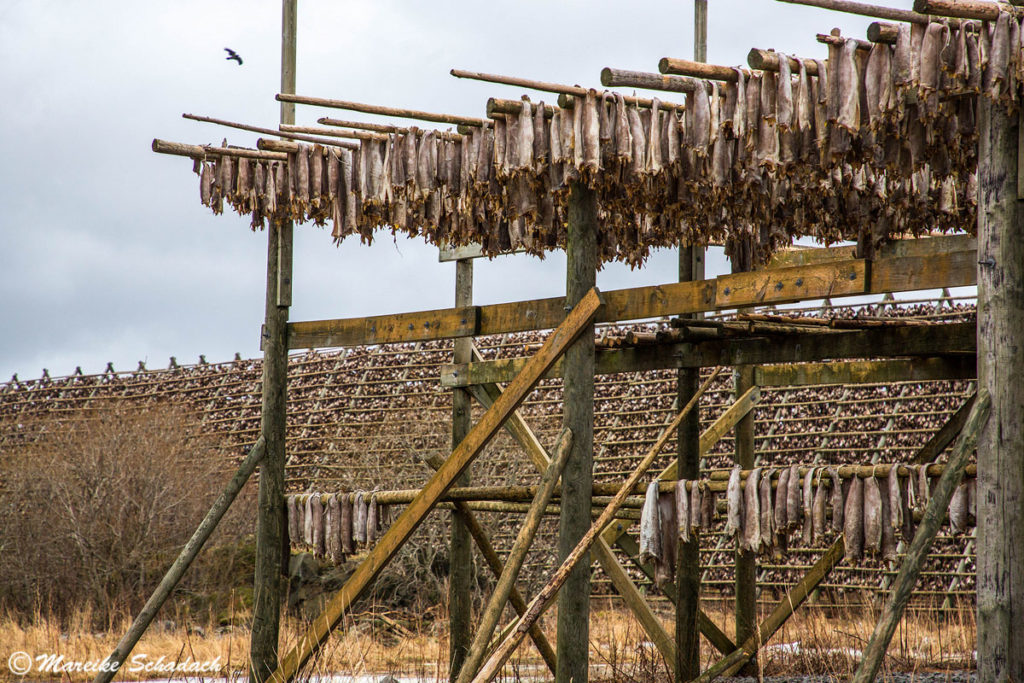
Besides tourism, fishing is the main source of income in Lofoten and also has a long tradition. Lured by the protected bays of the archipelago and the warm waters of the Gulf Stream, cod from the Barents Sea come to Lofoten every year between January and April to spawn.
Along with the cod, fishermen from all parts of the country came to the north of Norway for the annual Lofoten fishery and with hope of a big catch. Lofoten fishing has a long tradition, going back about 1000 years. The abundance of fish has thus made Lofoten fishing world famous. The caught fish is then dried and processed into stockfish. It is a durable and popular food.

You can try stockfish in the local restaurants. There are different variations on offer, depending on the time the fish is hung. The cod tongues are something very special and especially popular with the fishermen's children.
Towards the end of the 19th century more than 30,000 fishermen were counted during the main fishing season. Today about 5,000 Lofoten people still work full-time as fishermen. But Lofot fishing is no longer what it once was. Only larger towns like Svolvær can make a living from fish processing. Smaller towns, on the other hand, make a living from tourism or aquaculture.

Destinations in Winter - Highlights and Tips for Photo Locations
Now it goes into detail and there is plenty of inspiration for your travel planning. Here I tell you about the highlights of our trip to Lofoten and Vesterålen in winter. From our most beautiful destinations, our hikes, whale sightings and our favourite photo locations. I start in the northern part of Vesterålen and follow the route marked on the map to the southernmost village of Lofoten, with the catchy name Å.


1. Vesterålen - Whales and Sea Eagles in Andenes
The little village Andenes on the Vesterålen was actually the main reason for our whole trip. Only here was it possible to snorkel with orcas. You have read correctly. Snorkeling with orcas in ice-cold water, in the middle of winter, 300 km north of the Arctic Circle. Wrapped up warm in thermal underwear and dry suit including hood and gloves we went on a search for orcas. In winter the orcas follow the herring into the bays in the north of Norway. However, as is often the case in nature, the movements of the animals are not exactly predictable. Unfortunately we had bad luck and did not see any orcas. But at the same time we were lucky, because we could watch several sperm whales and sea eagles during our boat trip.
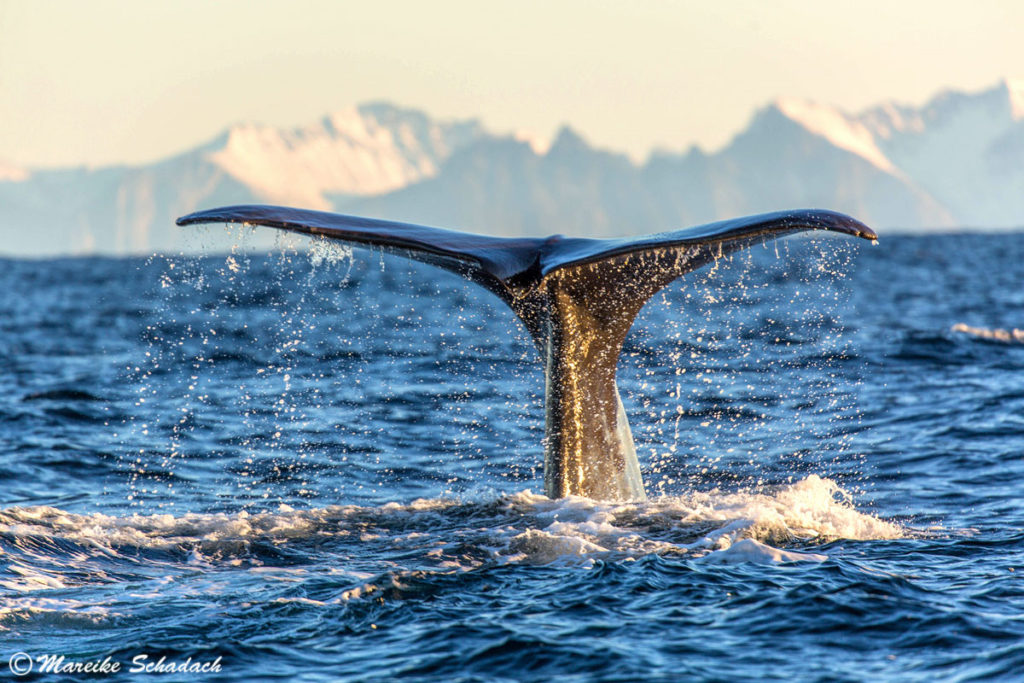
The team of Sea Safari Andenes has offered these tours in Andenes for many years. However, as the orcas are now less frequently sighted off Andenes, the snorkel tours are now available a little further north in Skjervøy. But only in the months of November and December. If you want to snorkel with orcas, contact Sea Safari Andenes in advance and ask for the periods with the best chances of sightings.
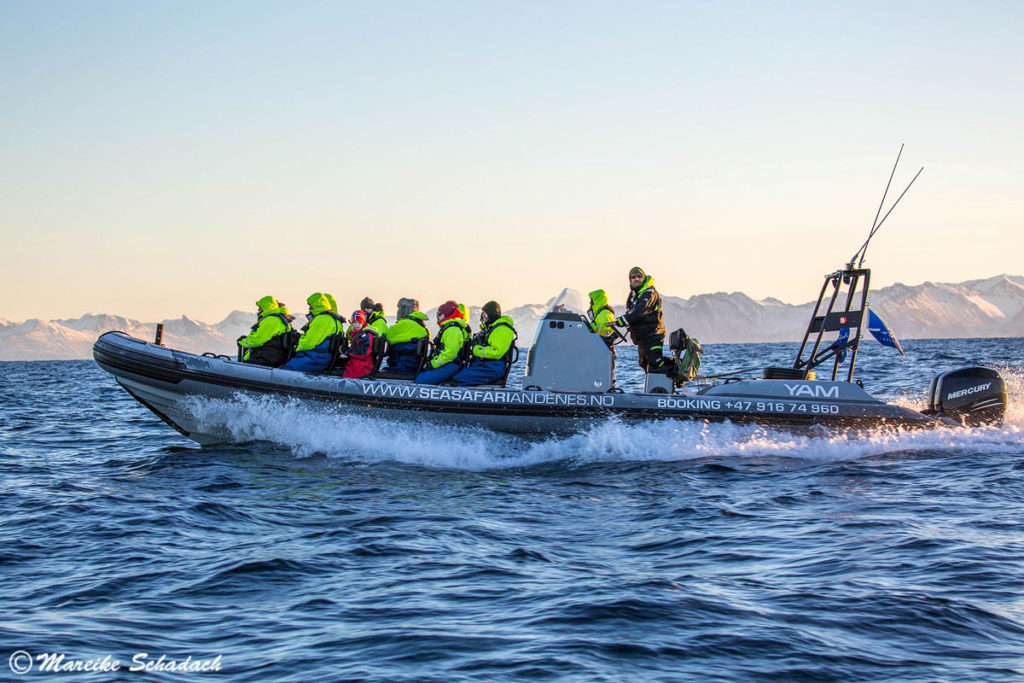
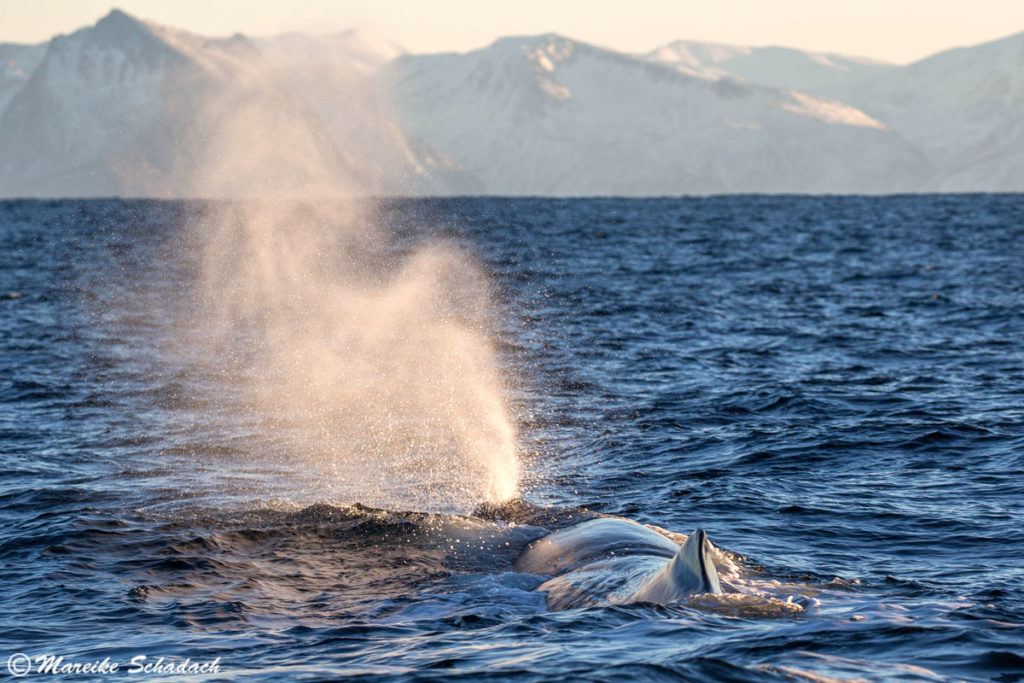
2. Fishing Station by Svolvær
On the island of Kieøya, west of Svolvær, there are many great photo opportunities. Most impressive I found the drying racks for the stockfish, most of which were fully loaded. You can also discover bunkers from the Second World War or walk along the pier to the foremost point where the statue of a fisherwoman stands.
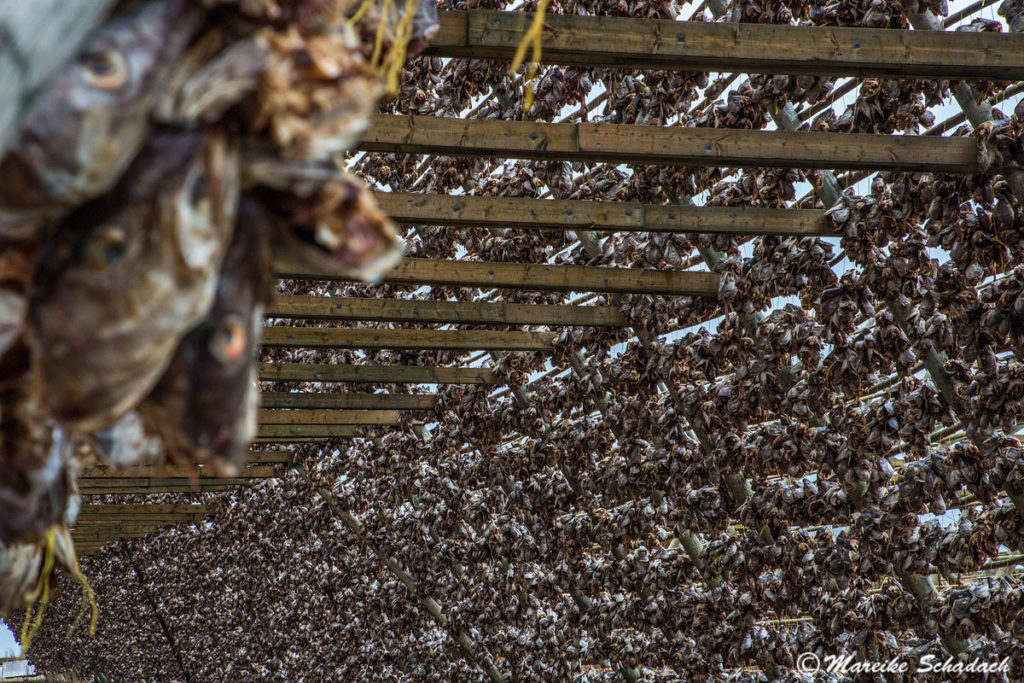

3. History of the Lofot Fishing at
Lofotmuseet Kabelvåg
In this partly open-air and partly indoor museum you can immerse yourself in the time of the Lofot fishing. There are several north land boats to see as well as traditionally furnished rorbuer and boathouses. On the hillside above the rorbuer, the main building from 1815 is on display, and Lofotmuseet Kabelvåg has an exhibition about fishing in Lofoten, harbours and coastal lighthouses and traditional handicrafts.

4. Fishing Village Henningsvær
The small fishing village Henningsvær has just 510 inhabitants. It lies on two offshore islands at the southern tip of the island Austvågøya. It is accessible via bridges and the drive to Henningsvær alone is impressive. At the entrance to the village, the car can be parked on a large car park, then you can continue on foot along fishing huts to the harbour. Here you have a great view of the colourful fishing boats. If you follow the road, you will first come to a football field with artificial grass and then to the fish racks behind it. Here a wild scenery opens up with great photo opportunities of rocks, cliffs and half overturned fish racks. Henningsvær is also popular with divers and snorkelers.


5. Nusfjord - one of the most beautiful Places on the Lofoten
The small village of Nusfjord is said to be one of the most beautiful on Lofoten. Because yellow and red painted Rorbuer from the 18th/19th century line up photogenic on the shore of the fjord. In 1823 and 1843 the Dahl family bought the village and finally developed it into Lofoten's leading fishing village by 1989. Today the village is an open-air museum whose buildings can be visited in summer for an entrance fee. Many of the Rorbur are now converted into holiday homes. There is a path over wooden footbridges up to a small lookout point on the rock.

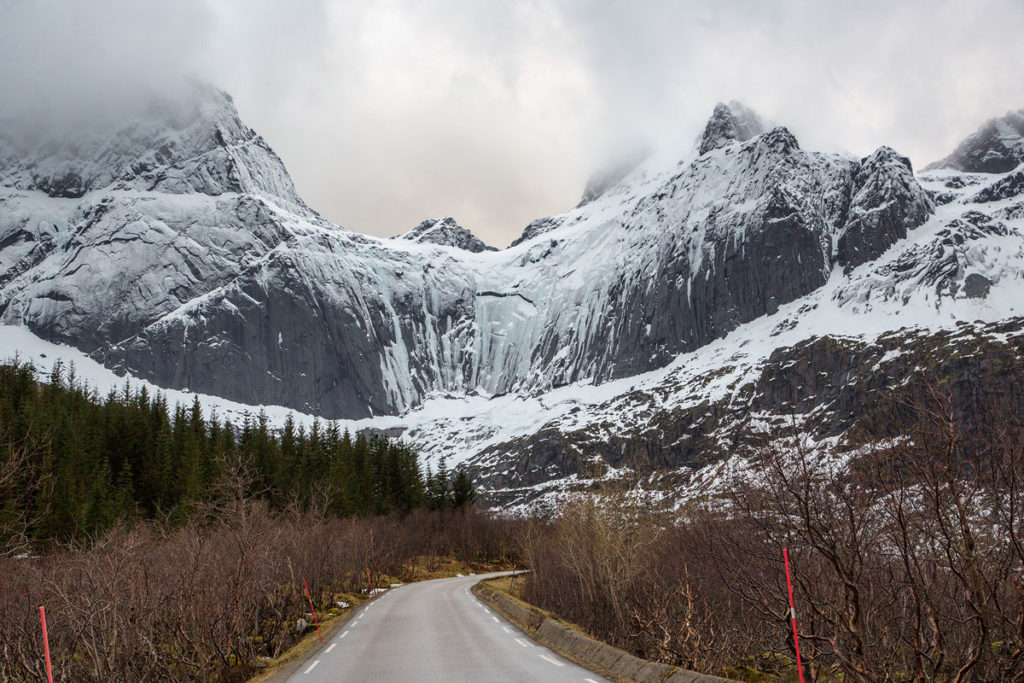
The village of Nusfjord and Nesland are connected by a historic fishing trail. Today this path is a marked hiking trail, which we have walked about halfway from Nesland. Softened paths and snowstorm forced us to turn back.

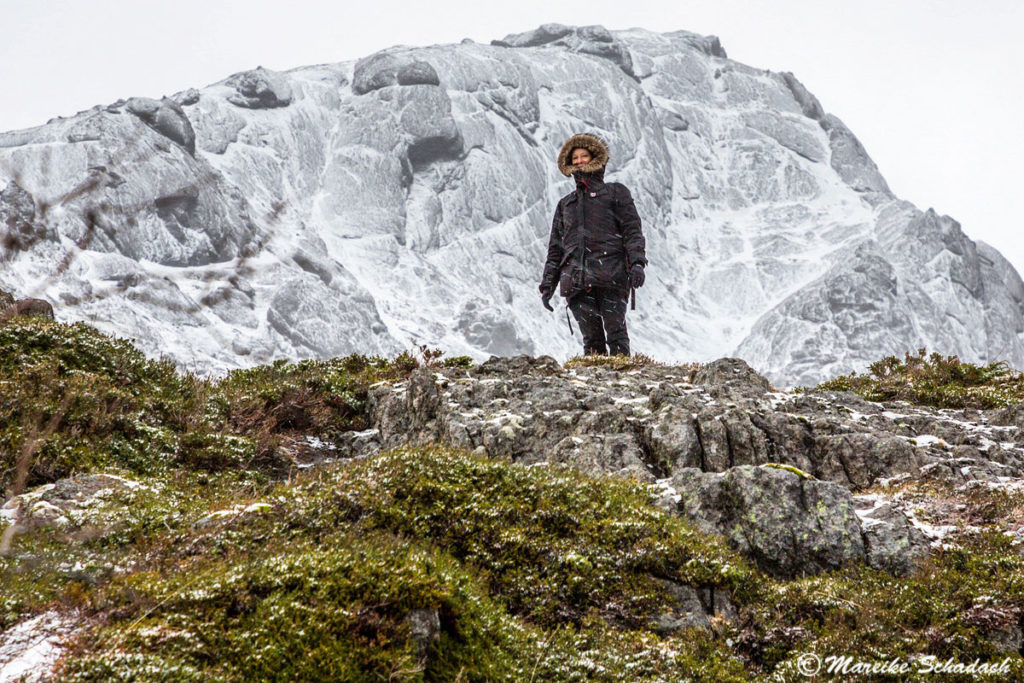
6. The Church of Flakstad
The red wooden church was built in 1780 in cross style and can accommodate about 300 people. Unfortunately it was locked and we could not see it from inside. But also from the outside it is an atmospheric photo motive with its red wooden panels, white window frames and the small onion tower.

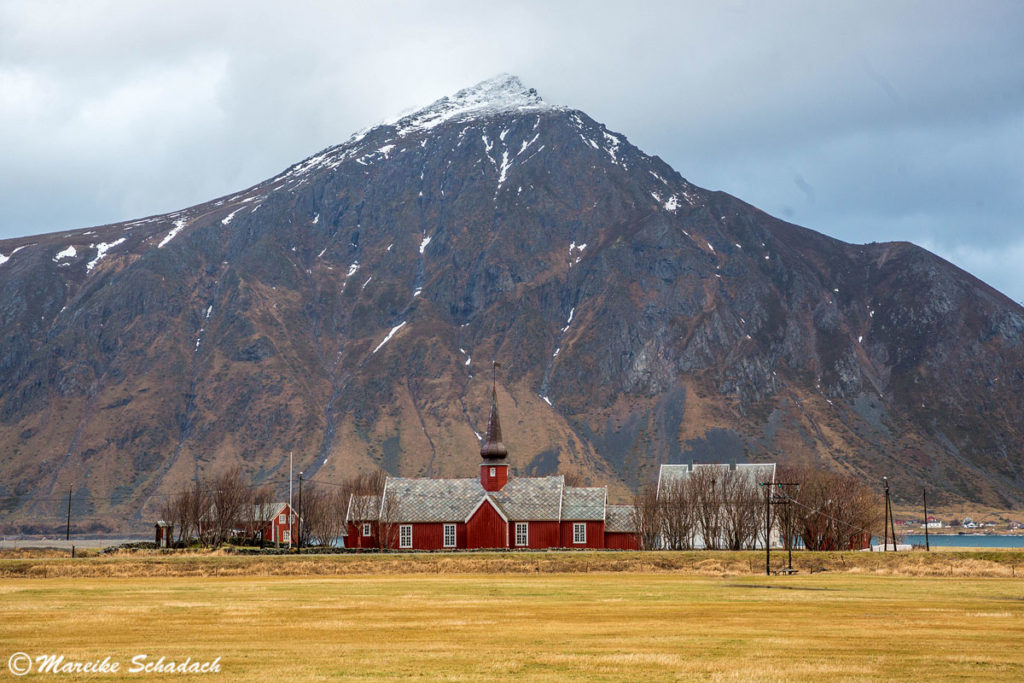
7. Kvalvik - Hike to the Bay with Surfer Hut
Der Film “North of the sun”
those of you who were at the E.O.F.T. (European Outdoor Film Tour) in 2014 already know it: Kvalvika Bay (Whale Bay) on the east side of Moskenesøya island. And you also know the movie "North of the sun" from the two surfers Inge Wegge and Jørn Nyseth Ranum. The two Norwegians lived one winter in a self-built hut on the beach. During this time they lived on expired food, which they were allowed to take from the shops for free. Without comfort or support they finally lived for nine months in a barren secluded bay north of the Arctic Circle. They surfed where the best waves are to be found, especially in winter. And they also collected washed up garbage. At the end of their stay, a helicopter carried away a total of three tons.

We were impressed by its history and started to look for the small hut. It is still standing on the same spot and is freely accessible. It is fully equipped with a small stove, mats and blankets. There are also photos hanging on the walls. Next to it there is a note on which Inge and Jørn tell their story. Visitors are invited to stay overnight. Another note motivates people to keep the project alive, do their part and fill a garbage bag with washed up waste. A great project, I think, which shows once again how little you can be happy with. And how easy it is to do something good for nature. If you don't know the film yet, take a look at www.northofthesun.no.
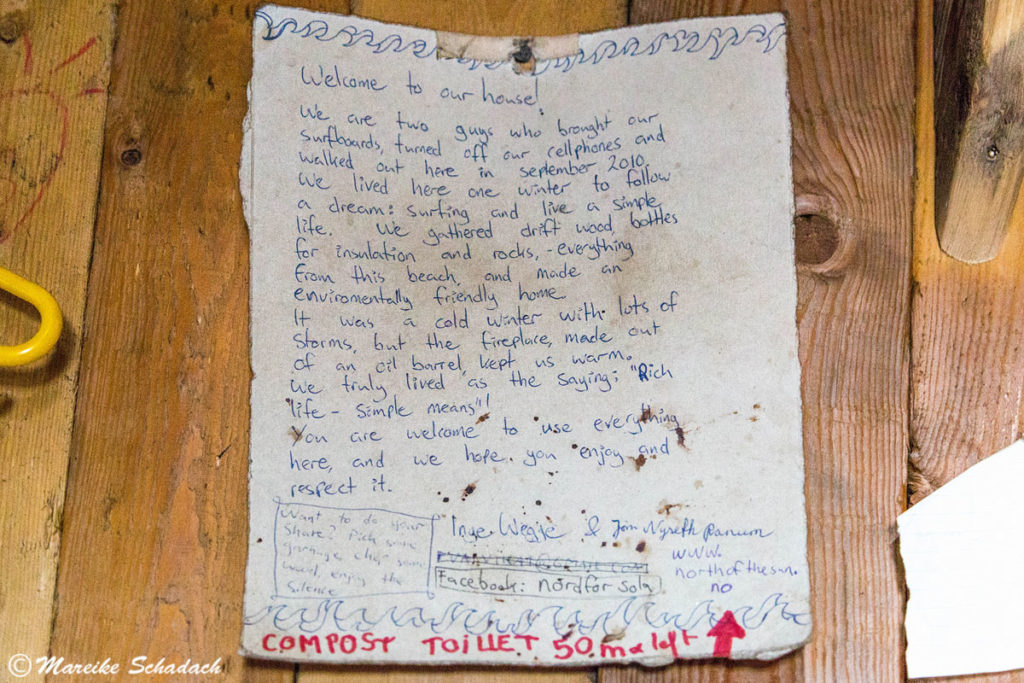
Hike to the bay and hut
The hike to Kvalvika Bay is one of the highlights of Lofoten and is also easy to do in winter. The bay can only be reached on foot or by boat and offers great camping possibilities. The starting point is a small car park about 3 km behind the village of Fredvang and the trail starts on the opposite side of the road and cannot be missed. It leads first over stone slabs and through a small birch forest. Soon the area becomes swampy and wooden planks are laid out. A somewhat steeper ascent follows and after about 45 minutes the highest point is reached. Soon the view of the bay opens up. The path up and down is rocky and not exactly defined. But the direction is clearly visible. After about two kilometers and 160 meters of altitude difference you have reached the beach. You will find the hut if you keep left, about halfway between the mountains and the beach.

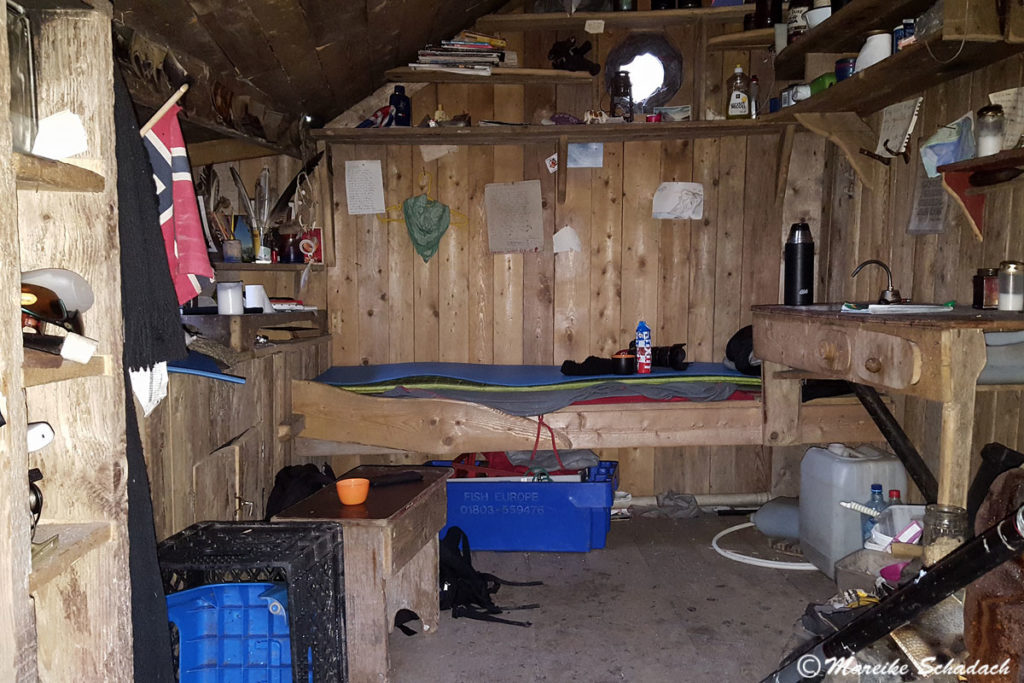

8. Sildpollnes Chapel at Austnesfjord
Coming from the north, there is a rest area on the left side of the road with a view of the Austnesfjord. From here you have a great view of the Sildpollnes Chapel. The view is especially beautiful in the evening hours when the sky is changing colour.

9. Fishing Village Å i Lofoten - Fishery Museum
The Norwegian Fishery Museum in Å i Lofoten is more of a museum village. The 23 museum buildings are distributed around the harbour. On display are fishermen's cabins (rorbuer), boathouses, a blacksmith's shop, a trankochery and a bakery. Besides boats, there is also a wide range of fishing equipment on display and there are great opportunities for detailed photos of nets or buoys. Especially in rainy weather a visit to the museum is an interesting option. The buildings are 100 to 200 years old and their colouring traditionally indicates their intended function. The houses of the village owners are painted in white, those of the merchants in blue and those of the fishermen in red.
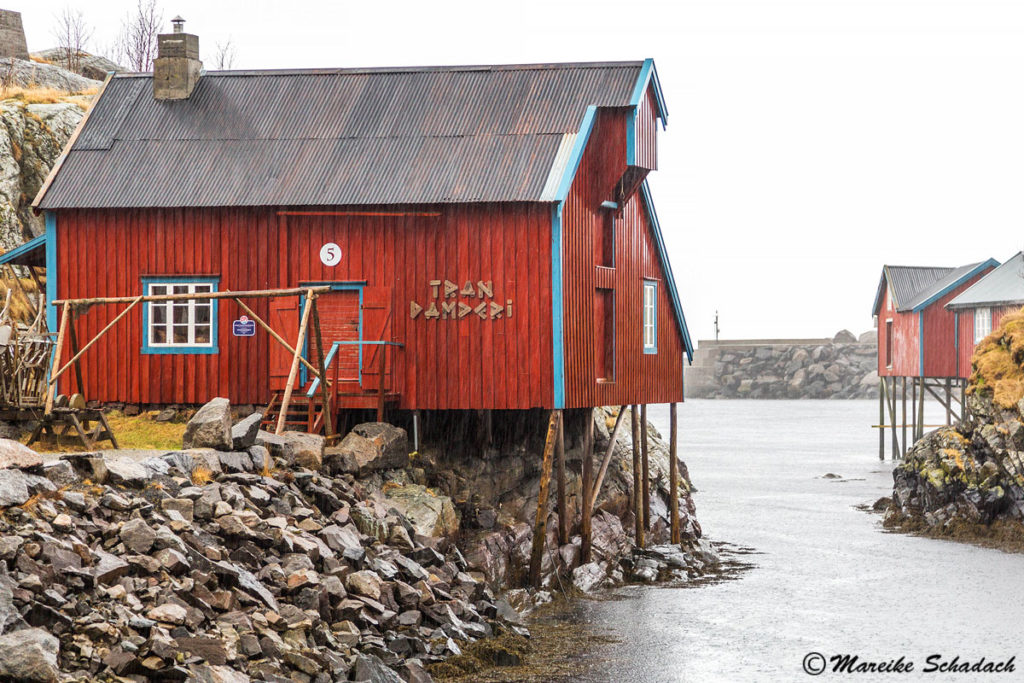



10. Rorbuer of Hamnøy and Reine
The rorbuer of Hamnøy is one of the most popular photo locations in Lofoten. Both by day and by night and in the best case with northern lights the view is fantastic. The red rorbuer are dominated by the 700 m high Lilandstinden.
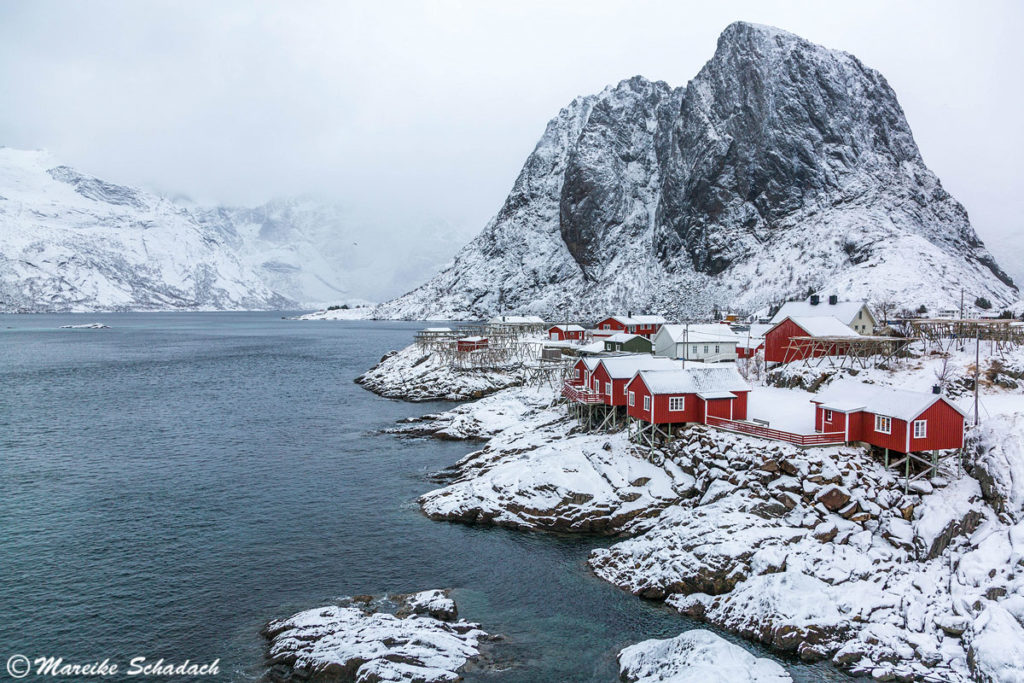
The small fishing village of Hamnøy is situated on the dam-connected island of Hamnøya at the beginning of the Reinefjord. Hamnøy is one of the most traditional fishing villages in Moskenesøy. The rorbuer are now furnished as holiday homes.
The journey to the neighbouring village Reine is over 3 bridges. On the way there you can see the beautiful yellow painted rorbuer of Sakrisøy (see cover picture). From the last bridge before Reine you also have a great view of the rorbuer of Reine.
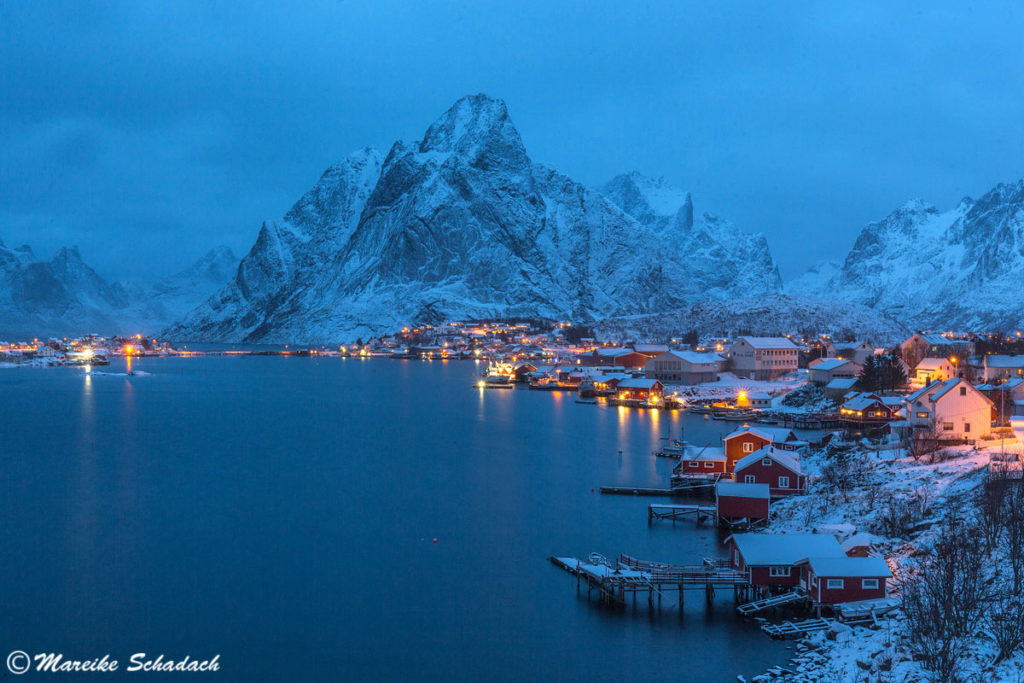
11. Northern Lights - Highlight in Winter
They are among the most beautiful experiences you can have in the north in winter. An absolute highlight on Lofoten and Vesterålen in winter. The northern lights, also called Aurora Borealis. They robbed me of my sleep, because when they appeared, I could not tear myself away. And if they did not appear, then at least I had to constantly look out of the window to check them.

There are several Auroral Forecast Appsto make your search easier. It informs you how high the probability for aurora is at your location. The app uses the so-called KP index for this purpose. Furthermore, the app offers you a forecast for the coming hours and days. Of course, the weather forecast is also important. Because when it's cloudy, the northern lights are unfortunately hidden behind the clouds. The degree of cloudiness can vary depending on the location. Therefore, it is definitely worthwhile to have a look at the forecast in the neighbouring villages.

Book Recommendations
The Lofot Fishermen - The last Viking by Johann Beuer
The novel from the year 1924 describes very vividly the Lofoten fishing and the life of the fishermen at that time. It gives an insight into the fates of the fishermen and lets you experience Lofoten even more intensely. You will visit villages described in the novel and see the Rorbuer houses with different eyes.
Unfortunately the book is out of print and can only be purchased as a used copy, e.g. from Amazon* .
Story line of the novel: Kristaver Myran fährt mit seiner Mannschaft zum alljährlichen Lofot-Fischfang. Ersatmals nutz er sein neues Boot “Robbe” und erstmals ist auch sein ältester Sohn Lars dabei. Es geht um Fischfang und Geld, Kälte und Sturm, Rorbuer und Boote, Heimweh und Überlebenskampf. Doch die Lofotfischer kämpfen nicht nur gegen Sturm und Wellen an. Sie erkämpfen sich auch Zugang zum Trollfjord, dessen Einfahrt im Winter 1890 von Dampfbooten blockiert wurde. Denn diese wollten den Trollfjord mit Senknetzen selber abfischen, die Nordlandboote sollten hingegen nur gegen Bezahlung fischen dürfen. Berühmt wurde dieser Kampf als “Die Schlacht vom Trollfjord”. Es war der erste große Kampf zwischen kapitalkräftigen Unternehmen und einfachen Fischern um die Ressourcen des Meeres.
Lofoten: With 12 Island Routes, 20 Walks by Michael Möbius and Annette Ster
The standard work on the Lofoten Islands. It contains articles about the country and its people, geology, climate and weather, flora and fauna, art, fishing and angling. The practical part continues with information about travel preparations, accommodation, food and drink and activities. The book also describes 12 island routes, including the so-called whale route to neighbouring Vesterålen. The book concludes with descriptions of 20 walks in the mountains between fjords: different levels of difficulty including all necessary information.
Rother Hiking Guide Lofoten and Vesteralen by Andrea Kostial and Tobias Kostial

The Rother Hiking Guide "Lofoten and Vesterålen" presents the 60 most beautiful tours north of the Arctic Circle. The routes range from family-friendly coastal walks to demanding mountain climbs. The book provides all the important information about the infrastructure of each hike, along with precise route descriptions, map sections with drawn-in routes and meaningful altitude profiles. GPS tracks are available for download from the Bergverlag Rother website.
Have you ever been to Lofoten yourself, maybe even in winter? How did you like it? Do you have any questions about my article or further suggestions? If so, please write me a comment!
